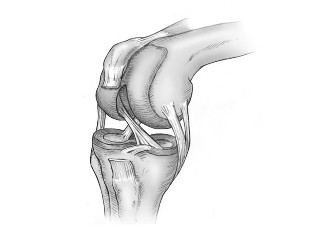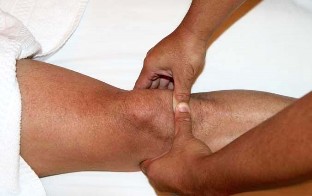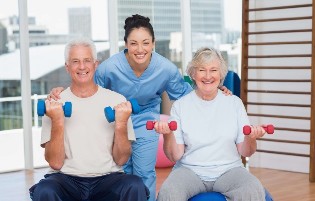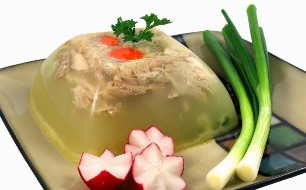Arthritis and osteoarthritis have a negative impact on the patient's entire life. When the symptoms of the described joint lesions appear, people give hasty results. May be wrong, confuse the indicated pathologies. It is important to remember that the difference between arthritis and osteoarthritis of the knee joint is significant. Let's take a closer look at the features of each disease. We will learn their differences and how osteoarthritis differs from Gonarthrosis of the knee joint.
Terminological Extension
Arthritis and osteoarthritis are related words. Both mean joint injuries. Because of the adaptation of the terms, patients often perceive them as synonyms. This approach is wrong. To know how arthritis differs from osteoarthritis of the knee joint, you need to consider the characteristics of each.
Arthrosis
Arthrosis is characterized by deformity of the joints. It is considered pathological age-related. It is more common in elderly patients. It also occurs in people under 40 years of age. More often, the formation is provoked by severe fractures of the joints, fractures. The risk group is represented by athletes. Read more about osteoarthritis of the knee joint.Arthritis
Arthritis is an inflammatory pathology that develops in one joint. In general, its occurrence is manifested by a deterioration in the work of the relationship. The whole body becomes inflamed. The disease can flare up in any joint. It can also cover several connections. Learn more about knee arthritis.The difference between arthritis and osteoarthritis
The difference between arthritis and osteoarthritis is represented by the nuance that an immune deficiency is considered a provocateur of inflammation. It can show itself:
- Stressful situation;
- Hypothermia;
- Delayed flu.
Inflammation is triggered by an infectious agent, metabolic diseases and immune disorders. With the advanced function of the body's defense system, the immune system works against itself.
Arthritis Symptoms
This joint pathology manifests itself with the main symptoms and additional symptoms. The main ones are:
- joint pain. Stronger, worse at night;
- Redness and swelling of the dermis on the affected joint.
Additional symptoms of inflammatory disease are also observed:
- night pains manifest themselves with complete rest;
- analgesic when moving;
- morning stiffness. It passes in an hour;
- redness, swelling in the knees;
- Severe pain attacks in the knee area. They last a few days;
- presence of tight knots under the skin;
- subfebrile temperature;
- variable swelling of the joints;
- swelling, redness in the dermis. They indicate the development of a reactive pathological form;
- decreased appetite;
- weight loss.
Symptoms of osteoarthritis
Considered joint damage occurs with primary and secondary symptoms. The main ones are:
- Joint crisis;
- localization in the knee area;
- restrict communication mobility;
- Pain is more common when moving. Rarely seen in a quiet state;
- joint deformation. Appearance changes, limb direction may change;
- Deterioration of blood supply, nutrition of joint tissues.
Specific manifestations are:
- The onset of night pain;
- pain decreases at rest;
- NSAIDs do not relieve pain;
- painful crisis;
- limited joint mobility;
- Reproduction of osteophytes.
Differences in major joint lesions

The main difference between osteoarthritis and arthritis is that arthrosis is a pathology of the joints that destroys and deforms it. Arthritis affects the functioning of internal organs. The kidneys, heart and liver suffer from this disease. When choosing a treatment, doctors pay special attention to the internal organs.
We will explain them below to make it easier to distinguish diseases.
| pathological symptoms | osteoarthritis | arthritis/ zxtr>| Pain Syndrome |
Generally appears after action. Pain is also felt after the painful tension. People do not pay enough attention to the fact that pain causes excessive tension. The disease progresses and causes painful sensations during light loads on the joint. The knees are also uncomfortable on weekends when the joint is not affected. In a relaxed state, the pain is not bothersome and is reduced. |
Pain with this pathology is always felt (active physical activity, at work, in a quiet state). The disease is often characterized by nocturnal pain, which is disturbed from 3 to 5 in the morning. |
Crunch |
This is a connection failure. Its formation is stimulated by the destruction of cartilage and bone friction. At the same time, a certain sound is heard (dry, rough). It increases with the development of the disease. |
| Decreased joint mobility |
Reduces the range of motion of the affected joint. |
The joints are closed, the whole body. |
joint deformity |
Appears gradually in joints. If the disease aggravates a painful type of pain. In general, there is no swelling. |
Warning is also available. The area of the affected joint turns red and swells. There is a sharp pain after pressing. Possible knots. The temperature of the site of inflammation rises. |
Blood test results |
Osteoarthritis does not affect blood test scores. Inflammation rates remain unchanged. |
This disease is characterized by an increase in ESR. An increase in leukocyte levels indicates the course of inflammation in the joint. Biochemical analysis shows that there is an increase in inflammation. |
Localization |
Most commonly corrected in the knee joints. Less commonly, the disease affects the joints of the fingers and ankles. |
| |
Is there a difference between osteoarthritis and gonarthrosis of the knee joint? Gonarthrosis is an osteoarthritis that develops in the area of the knee joints. This pathology can be confused with a number of diseases:
- Meniscopathy.Represented by damage to the meniscus. This pathology, blockage of the knee joint, can be observed in patients of different ages of both sexes. Basically, a connection can be damaged. The difference from gonarthrosis is rapid development. Running, jumping, a crisis in the joints after walking, manifests itself in sharp pain. After 10-15 minutes. passes sharp pains.
- Coxarthrosis(arthrosis of the hip joint). This diagnosis can be made due to the reflection of pain in the region from the hip joint to the knee. It is very easy to distinguish such a situation. With coxarthrosis, the mobility of the knee joint does not change. Bends easily without pain. Doctors note a decrease in the ability to turn the foot "from the hip". It is also difficult to spread your legs to the sides.
- Vascular painmanifests itself in the knee. Pain may indicate poor blood circulation in the articular area of the knee. Such feelings are observed in adolescence. At this time, active growth is observed. Vessels do not have time to grow as fast as bones. In pathology, the pain is symmetrical, manifesting itself equally in both limbs.
- Periarthritis. With inflammation of the knee tendons, pain is felt after carrying heavy bags and descending stairs. Most often, the pathology is observed in women over 40 years. The pain does not spread to the whole knee. It is felt only on the inner surface of the knees. Knee mobility is not limited.
Differential Diagnostics
With the described joint diseases, the doctor directs the patient to differential diagnosis. It is important to distinguish between arthritis and osteoarthritis. There are also a number of subtypes of arthritis. Osteoarthritis lasts in several stages.
Identify these two pathologies to distinguish them from each other and a number of other knee lesions:
- radiography of compounds;
- blood biochemistry;
- rheumatic tests;
- CT;
- radiography of the spine;
- MRI;
- bone scan.
Treatment of joint lesions
It is important to know what pathology you have been diagnosed with (osteoarthritis or arthritis of the knee joint) and not to get involved. Different approaches are used in the treatment of these diseases.
Medications for the treatment of osteoarthritis

Doctors use drugs (painkillers, hormonal drugs) to treat osteoarthritis. They also use physiotherapy procedures, therapeutic exercises and massage. If the pathological condition is particularly severe, drugs containing glucosamine sulfate are used. In some cases, surgery is required.
Therapeutic course for arthritis
Doctors choose a therapeutic course for arthritis, taking into account the pathological form. Patients should avoid advanced physical condition. loads, excessive alcohol, harmful diet. Therapy is carried out with the use of drugs (non-steroidal anti-inflammatory drugs, antibiotics). Physiotherapy procedures and exercise therapy are prescribed to increase the effectiveness of the treatment.
Prevention of joint pathologies
It is worth listening to the advice of experts to prevent the development of pathologies such as osteoarthritis or arthritis of the knee joint. As a precautionary measure, you must comply with the following requirements:
- Proper nutrition;
- We are average physicists.

Each of these activities will be required after treatment. Let's look at the features of each.
Physical activity
Must be intermediate. Such exercises help to lose weight, strengthen the corset of muscle fibers and increase blood circulation. Each substance is very important in the prevention of joint diseases.
Heavy load on connections
Patients should be careful. If you put an increasing load on the joints, you can accidentally injure yourself and get the opposite effect. Instead of improving the situation, new problems will arise. It is also dangerous to do incorrect exercises from the exercise therapy complex. All classes should be conducted under the supervision of an instructor and a participating physician.
Joint gymnastics
As a preventive measure, it is enough to do joint exercises. It is very common. It's easy to do. In addition, there is no need to buy special equipment. Special attention should be paid to swimming exercises. The load on the joints is minimal when performing any activity in the water.
Proper nutrition
Doctors recommend reconsidering your diet and food preferences. For prevention, doctors recommend removing a number of products from the daily menu. Among them:
- red meat;
- Alcohol;
- Foods with high fat levels.
should be included in the diet:
- Seafood;
- Fruit;
- Fish;
- Gelatin (mixed meat, jelly can be used as a dessert);
- Vegetables

Drink 2-3 liters of water a day. Alcohol is excluded. You need to start taking vitamins: calcium, D, B, A.
Other preventive measures are:
- Weight control;
- protection from hypothermia of joints;
- Compulsory maintenance of a healthy lifestyle;
- Proper sleep, rest;
- Wear comfortable shoes. It is possible to use shoes with orthopedic lining, comfortable heels;
- Eliminate a bad habit like crossing your legs while sitting;
- Eliminate stress.

















































